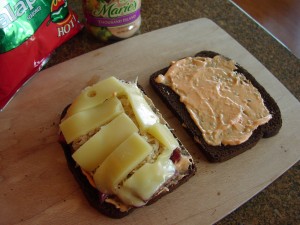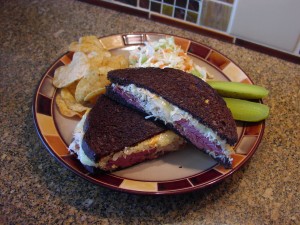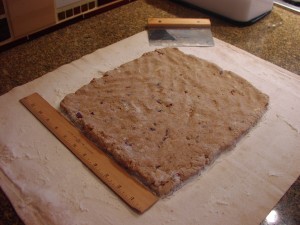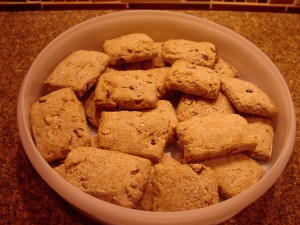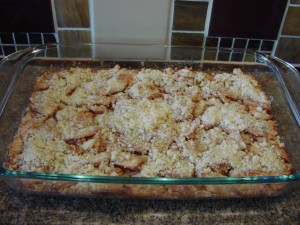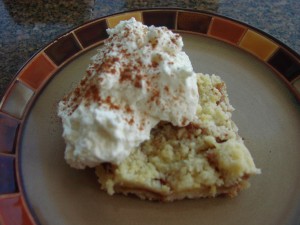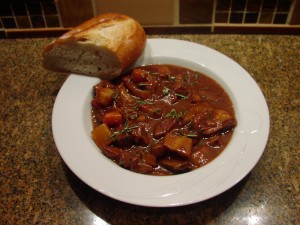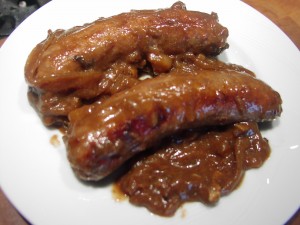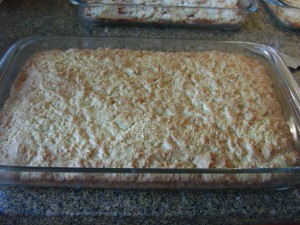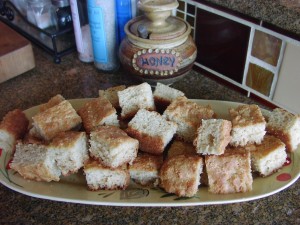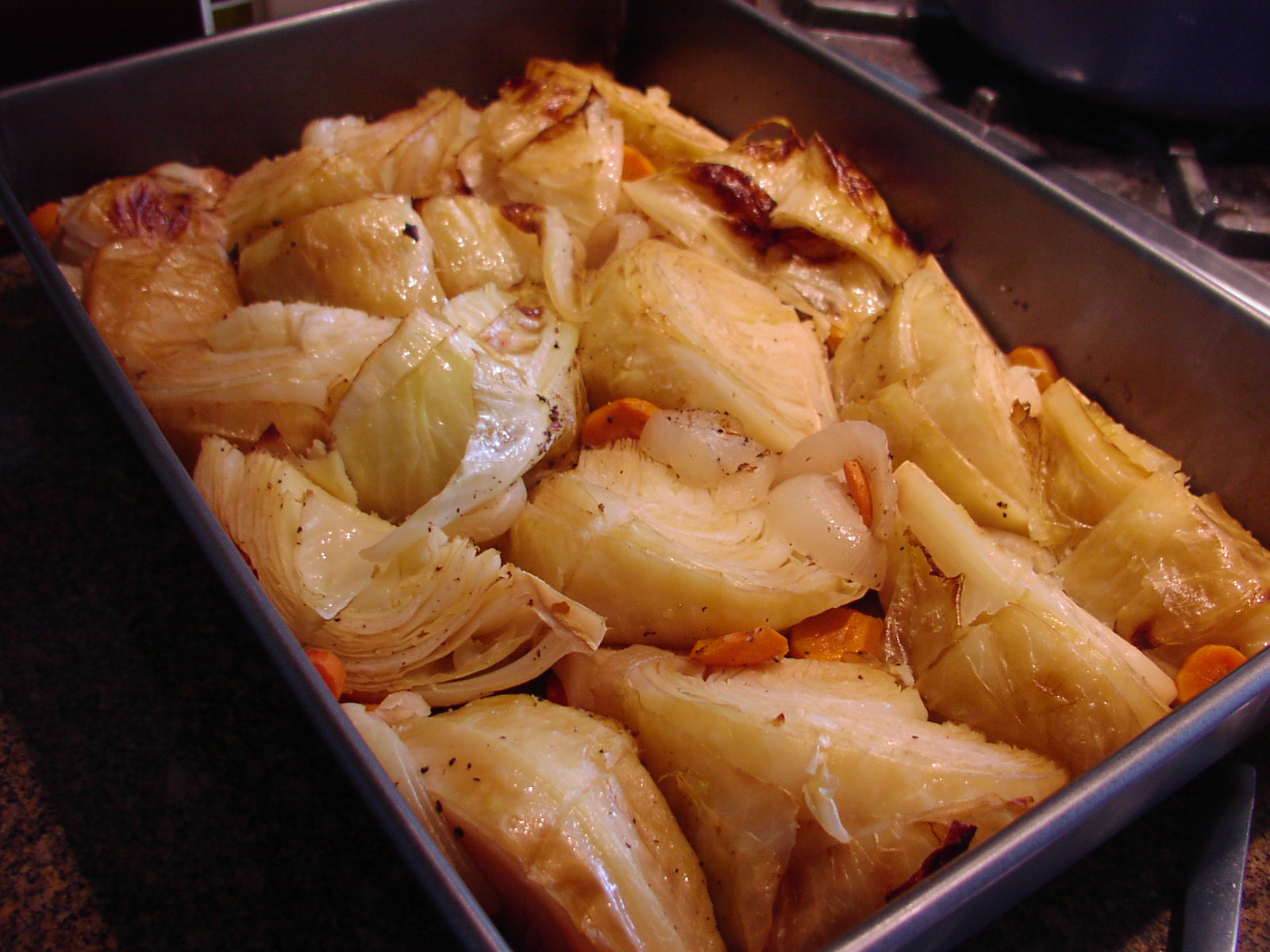You’re right. There is no picture attached. That’s because I served these for the first time this past Sunday to our JazzVox* guests, and before I could fetch my camera from the hall closet, half of the brownies were gone! You’d think I had starved our guests to this point, that I hadn’t already served them Spicy Baked Corn Beef with Mustard Sauce, Beer Braised Bangers (Sausages) with Onion Gravy, mashed potatoes, Braised Green Cabbage, fennel and apple slaw, Bread and Butter Pickles, and Light Rye Bread. (BTW, all the dishes underlined are already posted on this site and perfect to serve for St. Patrick’s Day. And yes, St. Paddy’s Day is just around the corner!)
So, for whatever reason, these brownies and the 50 or so White Chocolate Dipped Coffee Bean Shortbread I served during the concert intermission were gone before I could blink an eye, much less take a picture. And if I am to be completely truthful about these brownies, neither Mr. C. nor I even got a taste. (And yes, you’re right. I said I would NEVER post a recipe I had not tasted.) But who am I to argue with 30 guests and 2 performers who all proclaimed the brownies amazing! I’m not that wretched as to dishonor these intelligent jazz lovers by discrediting their comments. How rude would that be? So take the word of some of the savviest people I know, and give these brownies a try.
And if you are a purest and only make your brownies from scratch, I sincerely offer my apologies. But there are just times when the cost factor outweighs the need to build something from scratch. And when I buy a big old 6 batch box of Ghirardelli Triple Chocolate brownie mix from Costco, I feel good about using our monetary resources judiciously. It’s simply the economically prudent thing to do under certain circumstances. (Not to mention, that even undoctored, the mix brownies are absolutely delicious!)
*for more information on JazzVox home concerts, visit our website www.jazzvox.com
- 4 T. Irish cream liqueur, divided (I use Bailey’s)
- water
- 1/3 c. vegetable oil
- 1 egg, room temperature
- 1½ tsp. instant espresso coffee, divided (I use Medaglia D’oro) plus more for dusting
- 1 pkg. chocolate brownie mix (I use Ghirardelli)
- ½ c. (1 stick) unsalted butter, room temperature
- 1¾ c. powdered sugar, plus more as needed
- pinch of salt
Pour 3 tablespoon of the Irish cream into a 1/3 cup measuring cup. Add water until measuring cup is full. Pour into a medium sized bowl and whisk together with the vegetable oil, egg, and 1 teaspoon of the espresso powder. Add the dry brownie mix and stir until fully mixed. Pour into a lightly greased 9×13-inch pan. Glass pan if you have one. (Even if the mix instructions say to bake in an 8×8 or 9×9 pan use a 9×13.) Bake in a pre-heated 325 degree oven for 30-35 minutes. Do not over-bake. Fresh baked brownies appear under baked but cool to doneness. Meanwhile, cream together the butter and powdered sugar. (Will be a very dry mixture at this point.) In a small bowl, whisk together the salt, remaining 1 tablespoon of Irish cream, and the remaining ½ teaspoon of instant coffee. Add the cream mixture to the butter/powdered sugar mixture. Beat until very creamy and smooth. Add additional powdered sugar as needed. Spread evenly over cooled brownies. Sprinkle lightly with instant coffee. Chill until just before ready to cut and serve.

